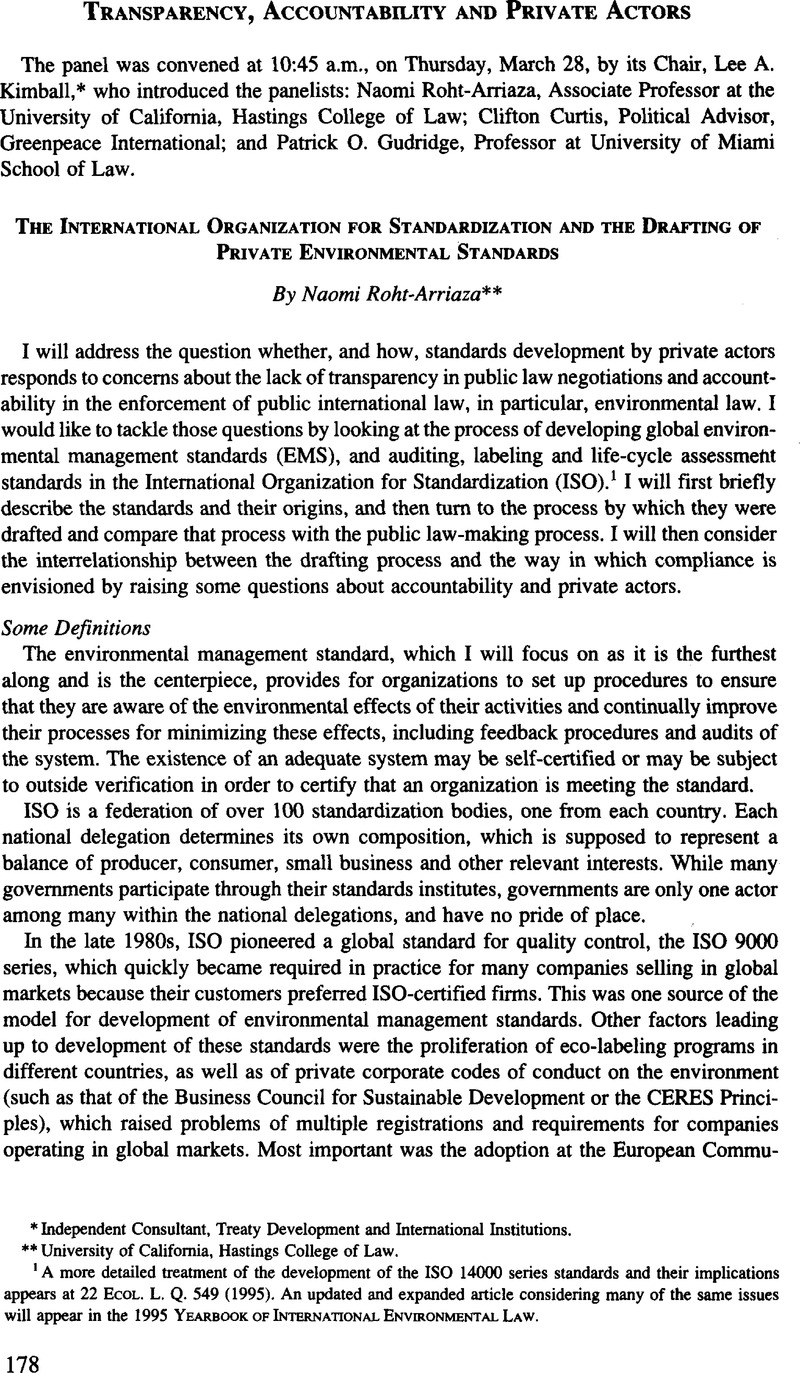No CrossRef data available.
Article contents
The International Organization for Standardization and the Drafting of Private Environmental Standards
Published online by Cambridge University Press: 17 February 2017
Abstract

- Type
- Transparency, Accountability and Private Actors
- Information
- Copyright
- Copyright © American Society of International Law 2015
References
* Independent Consultant, Treaty Development and International Institutions.
1 A more detailed treatment of the development of the ISO 14000 series standards and their implications appears at 22 Ecol. L. Q. 549 (1995). An updated and expanded article considering many of the same issues will appear in the 1995 Yearbook of International Environmental Law.
2 Council Regulation 1836/93. The regulation became effective as of April 1995.
3 The lack of democratic input into international law decision making has been an issue in the ratification of the North American Free Trade Agreement and the Maastricht Treaty.
4 See, e.g., Montreal Protocol on Substances that Deplete the Ozone Layer, reprinted in 26 ILM 1541, 1555 (1987), art. 5; UN Framework Convention on Climate Change, reprinted in 31 ILM 949 (1992); see generally Peter H. Sand, Lessons Learned in Global Environmental Governance (1990).
5 See, e.g., Agenda 21, Chapter 30.10(a), recommending that companies report annually on their environmental records, including use of energy and national resources; and UN Economic Commission for Europe, Ministerial Conference “Environment for Europe,“ Draft Guidelines on Access to Environmental Information and Public Participation in Environmental Decision Making, October 23–25, 1995, ECE/CEP/24,1 (14), calling on states to encourage entities whose activities have a significant adverse impact on the environment to report regularly to the public on the environmental impact of their activities.




